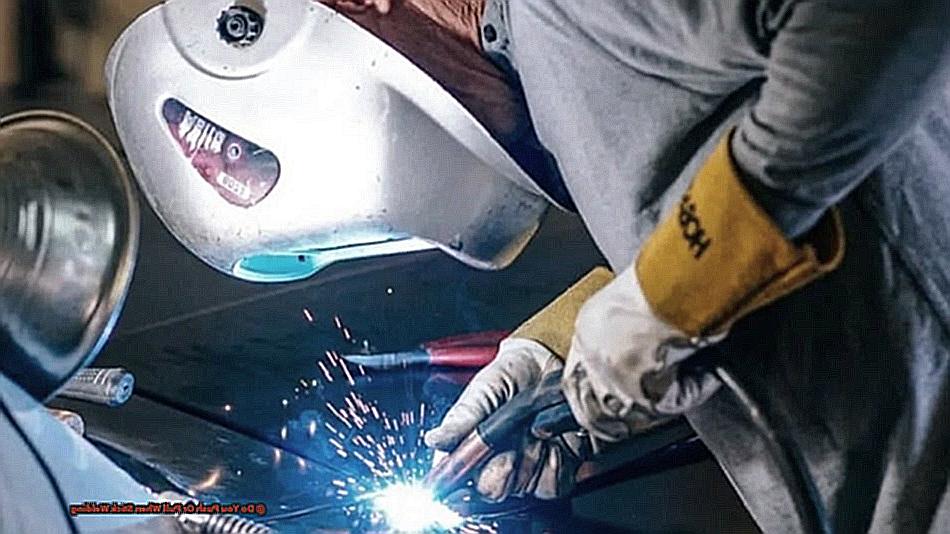We all know the thrill of capturing that perfect shot with our trusty camera lens. But have you ever stopped to consider what could potentially harm this vital piece of equipment?
From pesky scratches to insidious fungus growth, there are numerous factors that can wreak havoc on your beloved lens. As someone who has experienced the devastation of a damaged lens, I am here to share with you some common culprits and how to avoid them.
Trust me, these tips will save you from heartache in the long run.
Best Way to Clean Camera Lens
Contents
Capturing the perfect shot is an art that requires a clean and well-maintained camera lens. This applies to both professional photographers and hobbyists alike. Neglecting to properly care for your lens can result in damage and ultimately affect the quality of your photographs.
To avoid this, it is crucial to know the best way to clean your camera lens. So, let’s take a closer look at the three simple steps that will keep your lens in top shape.
Step 1: Air it Out
The first step in cleaning your camera lens is to use a blower to remove any dust or debris. This is a crucial step as it prevents scratches that could occur from wiping the lens too soon. It is important to note that blowing on the lens is not recommended as saliva or breath can cause condensation, which can damage the lens or affect photo quality.
Step 2: Brush Away
If a blower is not sufficient, use a specialized lens brush to gently remove any remaining dust or debris. Avoid using your fingers or any other objects, as they may leave oils and smudges on the lens. It is essential to use a brush specifically designed for camera lenses to prevent scratches.
Step 3: Wipe it Clean
Once all dust and debris have been removed, it’s time to wipe your lens clean. Use a cleaning solution and a microfiber cloth or cleaning wipe specifically designed for camera lenses. Gently wipe the lens in a circular motion, starting from the center and working your way outwards. This technique effectively removes fingerprints, oil, smudges, dirt, and dust without causing any damage.
Protect Your Lens
In addition to regular cleaning, it is vital to protect your lens from potential damage. Avoid rough handling and extreme conditions that may affect the lens. It is also essential to read and follow protection policies for your specific camera model.
How to Clean Camera Lens
As professional photographers, we are well aware of the paramount importance of a spotless and well-maintained camera lens. The state of our lens plays a vital role in the quality of our photographs, impacting everything from sharpness to color accuracy. However, with the plethora of products and techniques available, it can be quite bewildering to determine the best approach for cleaning our lenses without causing any damage. Fret not, as I have gathered expert insights and personal experiences to guide you through this perplexing process.
First and foremost, let us delve into the art of removing dust and dirt from your lens. While this may seem like a simple step, it is crucial to execute it with precision before proceeding to use any cleaning solution. Utilize a blower or a soft-bristled brush to gently eliminate any particles from the lens surface. Take caution not to apply excessive pressure or use abrasive materials as they can leave unsightly scratches on the lens.
Now that your lens is free from any loose debris, it is time to apply a cleaning solution. But hold your horses. Before you reach for that bottle of Windex or hand sanitizer, let me stop you right there. These household items may appear as convenient solutions, but in reality, they can cause severe harm to your lens. Instead, opt for a specialized lens cleaning solution designed explicitly for camera lenses. Dispense a few drops onto a lens tissue or cleaning cloth (never directly onto the lens), and gently wipe in circular motions from the center outwards. This technique effectively removes any oil, fingerprints, or grime that may have accumulated on your precious lens.
It is imperative to regularly inspect your lens for smudges, dust, or other blemishes and clean it accordingly. Personally, I have made it a habit to check my lens before every photoshoot. Not only does this ensure optimal image quality, but it also helps prevent any buildup that may become more challenging to remove later on.
Camera Lens Cleaner
While it may seem like a straightforward task, improper lens cleaning can lead to permanent damage to the coatings and glass. That’s why it is crucial to know the dos and don’ts of lens maintenance.
First and foremost, avoid exerting excessive force when wiping away dust, fingerprints, and grime from the front element of your lens. This can result in scratches and potential harm to the delicate coatings. Instead, opt for gentle and consistent wiping motions using a microfiber cloth or a specialized lens cleaning brush.
Additionally, be mindful of any liquid droplets on your lens. Even the tiniest droplets can cause damage if exposed to sunlight. Thus, if you happen to spill any liquid on your lens, immediately dry it with a clean cloth.
Now, let’s discuss cleaning solutions. It is crucial to use specialized solutions specifically formulated for camera lenses. These solutions are gentle yet effective in removing dirt without harming the delicate coatings. Never resort to using household cleaners or alcohol-based solutions as they can strip away the coatings and cause irreparable damage.
Regularly inspecting your lens for smudges and blemishes is also crucial. Dust, fingerprints, and grime are inevitable when using a camera, but if left unattended for too long, they can permanently damage your lens. So, make it a habit to clean your lens after every use and inspect it for any smudges or blemishes before each shoot.
In conclusion, proper camera lens cleaning is vital for maintaining the quality and durability of your equipment. By following these expert tips, you can ensure breathtaking photographs while safeguarding your lens from potential harm. Remember to be gentle, use specialized solutions, and regularly inspect for smudges and blemishes.
How to Clean Camera Lens
As an avid photography enthusiast, you understand the significance of maintaining a clean camera lens. A dirty lens can greatly impact the quality of your photos and potentially cause permanent damage to your equipment.
That’s why it’s essential to have the right knowledge and tools in order to properly clean your lens. In this blog post, we will share practical tips and tricks on how to keep your camera lens clean and in top-notch condition.
Eliminate Visible Dust and Dirt
The first step in cleaning your camera lens is to remove any visible dust or dirt. Gently use a blower or soft-bristled brush to sweep away any particles. Be cautious not to apply too much pressure as this can result in scratches on the lens. If there is stubborn dirt, you can use a lens cleaning brush or a microfiber cloth to gently wipe it away.
Utilize Lens Cleaning Solution
After eliminating visible dirt, it’s time to apply a lens cleaning solution. Remember not to spray directly onto the lens as this can cause damage. Instead, apply a few drops onto a microfiber cloth or lens cleaning paper. Make sure to use a solution specifically designed for camera lenses and avoid those containing alcohol or ammonia, which can harm the lens coating.
Gently Wipe in Circular Motions
Using the cloth or paper with the cleaning solution, gently wipe the lens in circular motions. Begin from the center and gradually work your way outward with smooth side-to-side motions. Avoid using spiral motions as they may leave streaks on your lens. Be cautious not to apply too much pressure as this can also result in scratches.
Thoroughly Dry
Once you have cleaned the lens, use another dry microfiber cloth or tissue to remove any remaining moisture. This step is crucial as leaving moisture on the lens can cause fogging or water spots, which can greatly impact photo quality.
Avoid Excess Cleaning
As an experienced welder, I am well aware of the significance of maintaining my equipment in pristine condition. The same principle applies to camera lenses – proper upkeep is essential for capturing crystal-clear photographs. However, excessive cleaning can have detrimental effects.
Here are my top insights and recommendations for avoiding superfluous cleaning and extending the longevity of your camera lens:
- Utilize a lens cap or filter: Prevention is always better than cure. Keep your lens safeguarded by utilizing a lens cap or a UV filter. These accessories act as barriers against dust, grime, and scratches, reducing the need for frequent cleaning.
- Invest in a high-quality blower: Instead of resorting to wiping your lens with a cloth, opt for a blower to eliminate any loose particles. A top-notch blower will have sufficient force to dislodge dust and debris without causing any harm to your lens.
- Handle with care when cleaning: If you must clean your lens, use a microfiber cloth and gently rub in a circular motion. Refrain from using harsh chemicals or cleaning solutions as they can damage the lens coating.
- Avoid touching the glass: Our fingers naturally produce oils that can transfer onto the lens surface and leave smudges. Try not to touch the glass when handling your camera or swapping lenses.
- Clean only when necessary: Don’t fall into the trap of continuously wiping your lens every time you spot a speck of dust. Unless there is visible dirt or smudges affecting your photos, avoid excessive cleaning.
By adhering to these suggestions, you can steer clear of excess cleaning and safeguard your camera lens from potential harm. Remember, a little bit of dust or dirt won’t ruin your photos – but over-cleaning just might.
Showcase your vision with elegant shot lists and storyboards.
Just like how a welder must maintain their equipment, a filmmaker must also tend to their lens to capture stunning shots. Luckily, with the right tools and techniques, keeping your lens in top shape is a breeze and can save you from expensive repairs or replacements.
One vital tool in preserving your lens’s quality is a shot list. This detailed list outlines all shots to be filmed, including camera angles, movement, lenses, lighting, and more. It serves as a reference during filming and helps coordinate and communicate with your crew. In this digital age, shot lists have evolved into more than just pre-visualization tools – they also assist in keeping production organized and efficient.
But how does one create a shot list? Thanks to software like StudioBinder’s free shot listing app, producing professional and well-organized shot lists has never been easier. You can input all the necessary details for each shot, such as equipment requirements, ensuring a seamless filming process. Not only does this save time, but it also minimizes delays on set.
Another valuable tool in pre-production is storyboards. These are visual representations of a film or video project that depict each shot or scene in sequence. They can be created digitally using software or through sketches and drawings. Storyboards are essential in communicating the director’s vision to the crew and aiding in planning and preparation for filming.
However, storyboards offer more than just showcasing the director’s vision – they also provide a visual representation of each shot before filming begins. This eliminates any guesswork and allows for more creative decisions. Furthermore, storyboards improve communication between crew members who may not be familiar with the script. Plus, they help identify any potential issues with a shot beforehand, saving time and costs during production and post-production.
When used together, shot lists and storyboards effectively showcase your creative vision to the entire crew.
Conclusion
As passionate photographers, we all know the exhilaration of capturing that perfect shot with our beloved camera lens. However, it is crucial to be mindful of potential dangers that can jeopardize this essential piece of equipment. From scratches and dust to fungus growth and extreme weather conditions, there are various factors that can ruin a camera lens.
By following the tips and tricks shared in this article, you can safeguard your lens from harm and ensure top-notch photo quality. Remember to regularly clean your lens with specialized solutions and tools, handle it delicately, and invest in protective accessories.
Moreover, incorporating shot lists and storyboards into your filmmaking process can effectively communicate your creative vision and streamline production.





